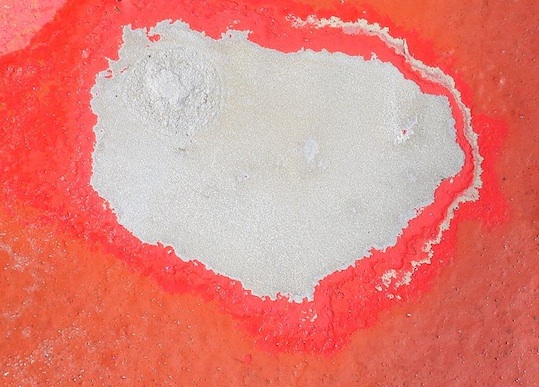Fight that rust
Surface Preparation
Manual Tool Comparison
| Cleaning method | Typical failure pattern paint failure upon…. | Number of required repairs in 5 years or 60 months | Side effects & issues |
Chipping, grinding, needlegun onboard | 3 to 4 months | => 15 to 20 repairs in 5 years | negative vetting & inspection, ship downgrading & rejection |
Hydrojetting at onboard conditions | 8 to 24 months, subject to workmanship | => 2.5 to 7.5 repairs in 5 years | considerable accident risk, 10 t water/day, frequent breakdown |
Aquajet Blasting at onboard conditions | 4 to 8 years | => 0.625 to 1.25 repairs in 5 years | training and crew supervision recommended |
High cleaning standard and watershield preventing blast dust, explosion risk are main reasons why it is used on gas ships, in Petronas refineries, flammable areas and other "no blast zones". Plus: garnet as a natural stone => harmless to workers, nature and aquatic life.
What is the difference to water jetting ?AQUAJET AJ-150 is the big brother of the AJ-50. It needs 200 cfm and has the following advantages in comparison to a high pressure water jet: 1. Operational Pressure Aquajet operates at very low pressures of 7-8 bar. In consequence all its components and hoses operate below design limits and do not break easily. In comparison, a 500-1000 bar water pump operates at design limits. Its extremely high pressure leads to frequent equipment failure and downtime. 50 % downtime is not unusual for hydrojets. 2. Risk of Accident The same high pressure is the reason for hydrojetting equipment being known to be highly dangerous. Water jets have caused numerous leg amputations! Hydrojet workers need special training, special safety gear and/or certificates to be allowed to work with 500-2000 bar.3. Feathering of paint in rust spots

This kind of "feathering" is of highest importance for lasting overpaint performance. No rust, no water, no salt crystals can be hidden under old paint protrusions. Even 35,000 psi UHP cannot achieve feathering - it is impossible for water jetting. 4. Roughness Hydojetting cannot create the important "grip" or roughness profile of 20-30 microns needed for paint to adhere on steel and old paint. Garnet blasting creates this roughness even at a relatively low pressure. 5. Hard to Reach Areas: Impossible for all hydrojets. You can bend and direct Aquajet nozzles just as easy as a garden hose. Perfect for work under and between pipes/structures. 6. Water Consumption A 500 bar water jet needs about 30 liters fresh water per minute, usually 8-10 tons in 10 hours. Aquajet AJ-150 needs 7-8 bar air pressure, 200 psi air volume capacity and 1-2 tons fresh water per day. 7. Cost of Equipment Clients pay USD 15-30,000 for a 500 bar water jet or USD 70,000 for a 2,000 bar water jet. Aquajet's price is a fraction of that.Pressure Tool Comparison1: If you connect a conventional 300 lbs shipyard blast set to the ship air onboard, nothing happens since ship air pressure is insufficient. 2: With a 390 cfm compressor, the conventional 300 lbs blaster blows out 50 to 80 kgs copper slag or sand per m2. (copper slag damages aquatic environment, correct procedure is to collect and return to shore. Sand harms your workers' lungs)
| If crew is blasting just 8 days per month: | ||
| A conventional blaster takes at least 60 kgs per m2, 40 m2/day | => 2.4 tons grit a day at 40 m2/day | => 19.2 tons per month (8 full blast days per month) |
| Aquajet needs: 15-30 kgs p. m2, garnet is used 2-4 times, 40 m2/day | => 150 to 600 kgs garnet a day (=600/4 to 1200/2) | => 1.2 - 4.8 tons per month (8 full blast days per month) |
| In comparison, a 500 bar hydrojet uses 10 tons fresh water per day | => 10 tons fresh water per day | => 80 tons per month . (8 blast days). Hydrojet breakdown far higher: hydrojets operate at design limits. |
Masters don't want to spend 80 tons water per month and don't like 20 tons of sand onboard: Aquajet is a wet abrasive blaster designed for low air conditions onboard, able to recycle used garnet with a grit consumption of 4 to 15 kgs/m2 (using garnet 2-4 times) instead of 50-80 kgs/m2 !.
Sound Steel Pte Ltd